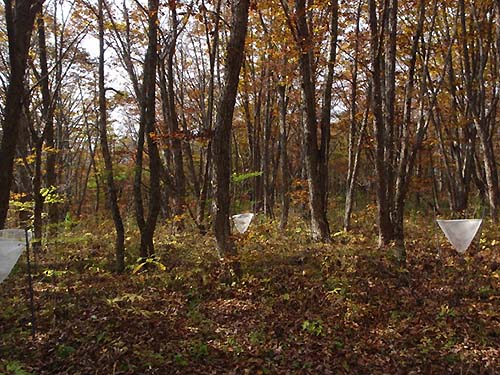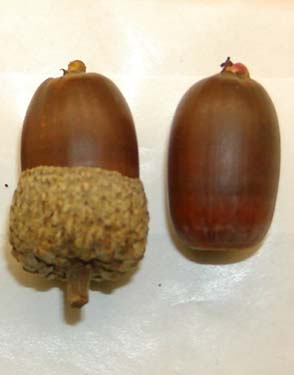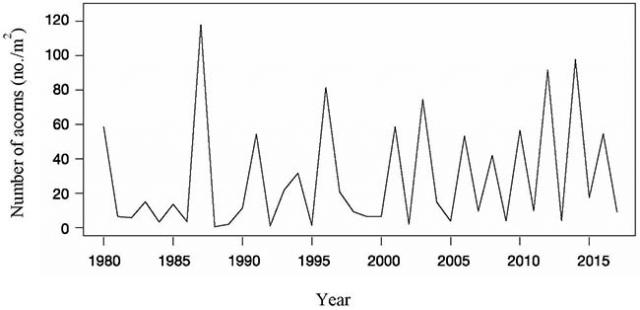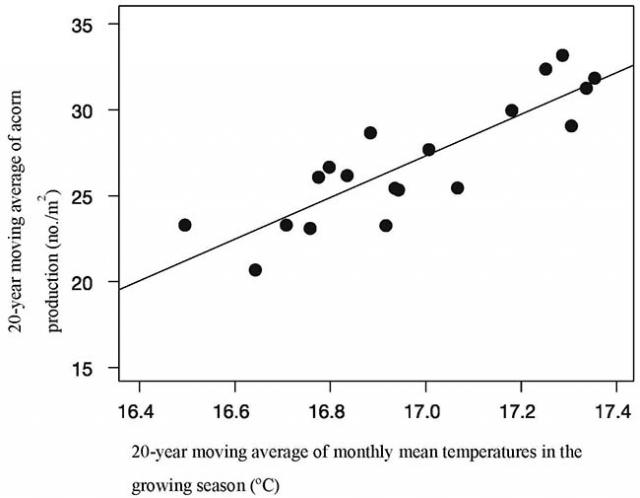Home > Research > Research Results > Research Results 2020 > The masting intervals of acorns have shortened over the past 40 years
Update:June 8, 2020
Main content starts here.
The masting intervals of acorns have shortened over the past 40 years
| Article title |
Decadal changes in masting behaviour of oak trees with rising temperature |
|---|---|
| Author (affiliation) |
Mitsue Shibata (a), Takashi Masaki (b), Tsutomu Yagihashi (a), Takuya Shimada (c), Takashi Saitoh,(d) (a) Department of Forest Vegetation, FFPRI, Tsukuba, Ibaraki, Japan. (b) Principal Research Director, FFPRI, Tsukuba, Ibaraki, Japan. (c) Department of Wildlife Biology, FFPRI, Tsukuba, Ibaraki, Japan. (d) Hokkaido University, Sapporo, Hokkaido, Japan. |
| Publication Journal |
Journal of Ecology, British Ecological Society DOI:10.1111/1365-2745.13337( External link ) |
| Content introduction |
Masting (synchronous and highly variable reproduction among years by a plant population) of acorns has impacts not only on the timing and scale of the regeneration of oak species, but also on the population dynamics of seed consuming wild animals. In the 40 years since 1980, the FFPRI has been monitoring acorn production using seed traps (see photos) in the Kitakami Mountains of northern Japan in order to study the masting behaviour of the Japanese oak, mizunara (Quercus crispula) . By conducting statistical analyses of this monitoring data, we found that the amount of acorn production has increased in recent years, and masting intervals have shortened from a 3- or 4- year cycle to a 2-year cycle (Fig. 1). These trends corresponded well with rising temperature (ca. 0.8℃ increase over the past 40 years) in the flowering and growing seasons (Fig. 2). This finding suggests that increasing pollination success and a resource allocation shift caused by rising temperature may be resulting in decadal changes in masting behaviour. By continuing such long-term monitoring, we will be able to gain a better understanding of dynamic changes in forest ecosystems associated with climate change. Our results of this study will provide important information for long-term forest management, such as predicting seed production for natural regeneration techniques and evaluating the habitats of wild animals in temperate broad-leaved forests.
Photos ; Nakaimura research site in the Kitakami Mountains (left), and acorns of the Japanese oak, mizunara (right)
|
Copyright © Forest Research and Management Organization. All rights reserved.




